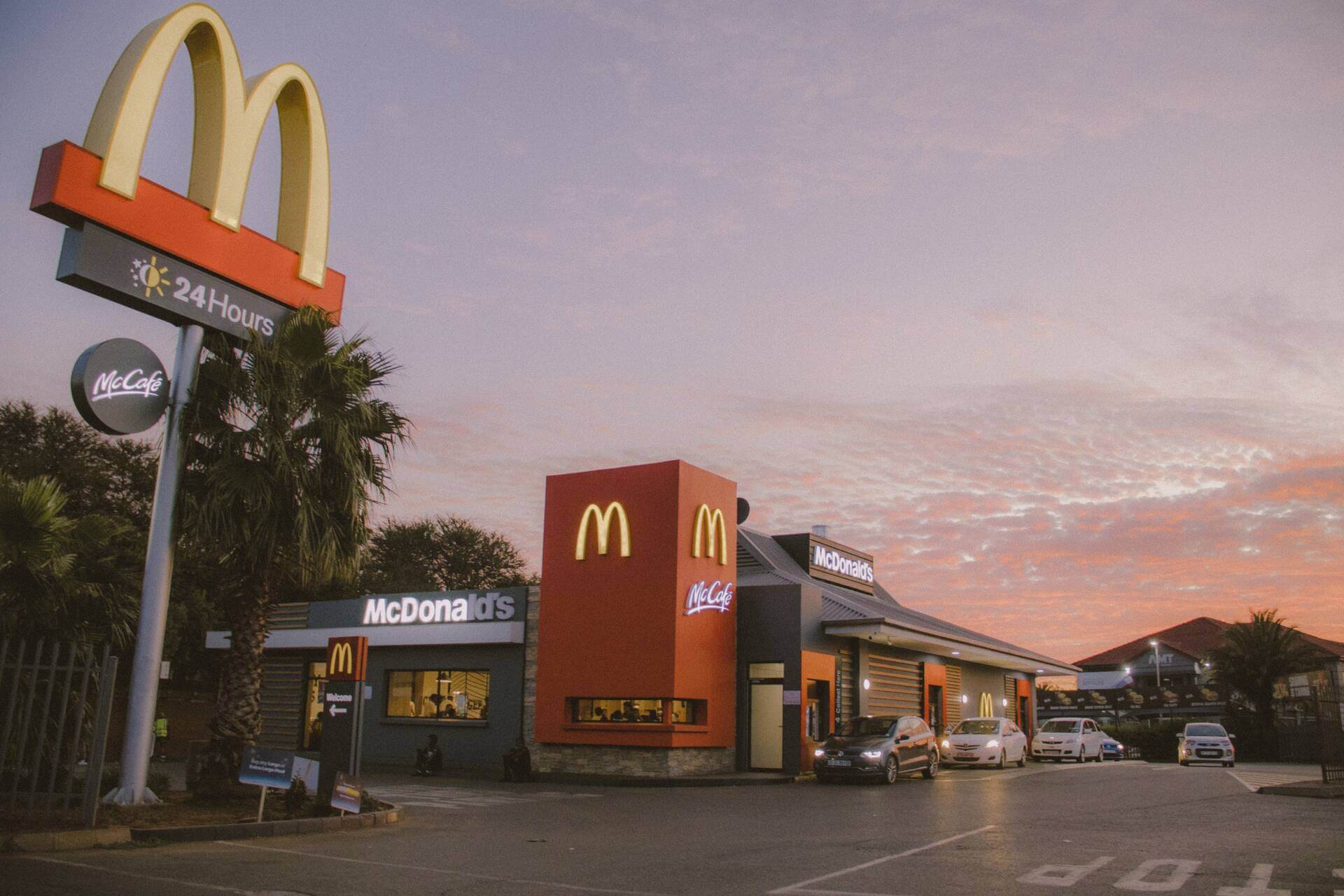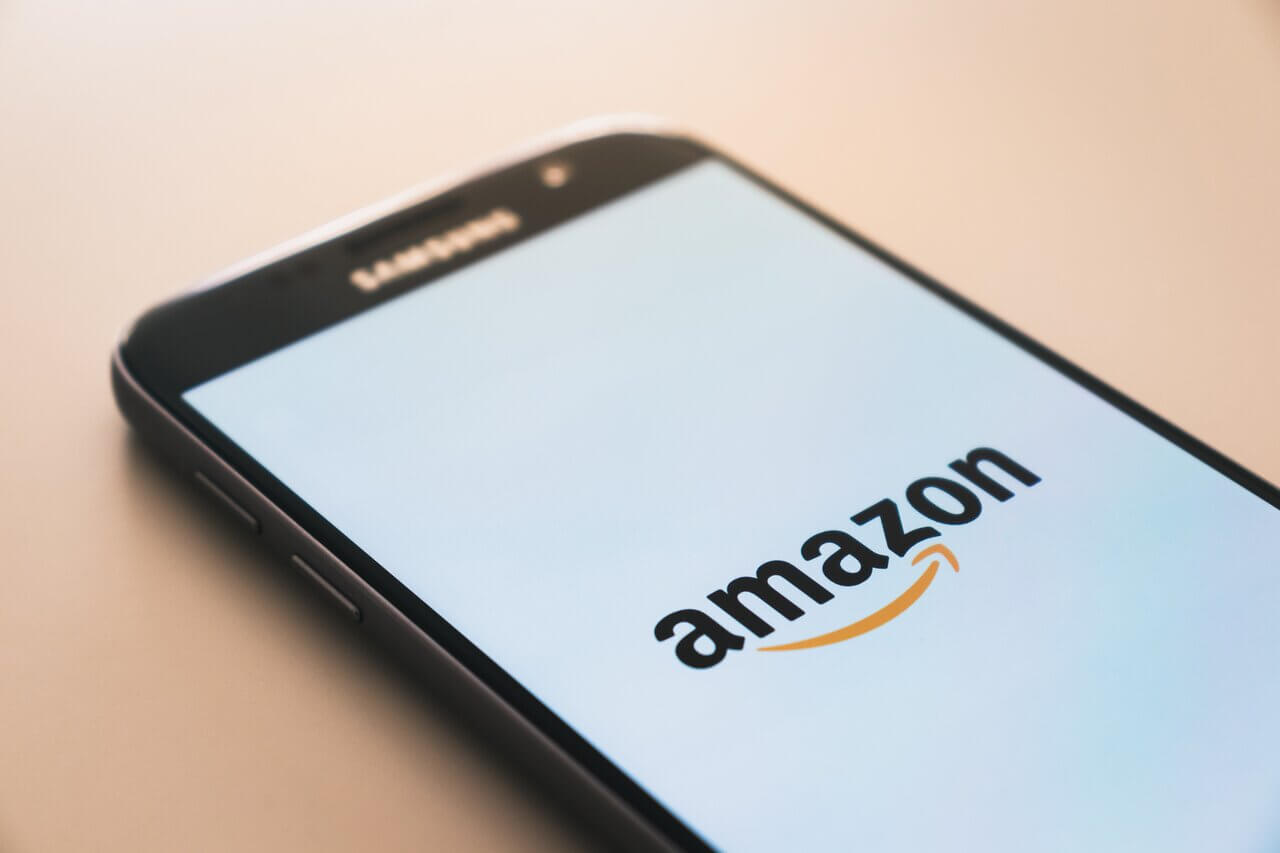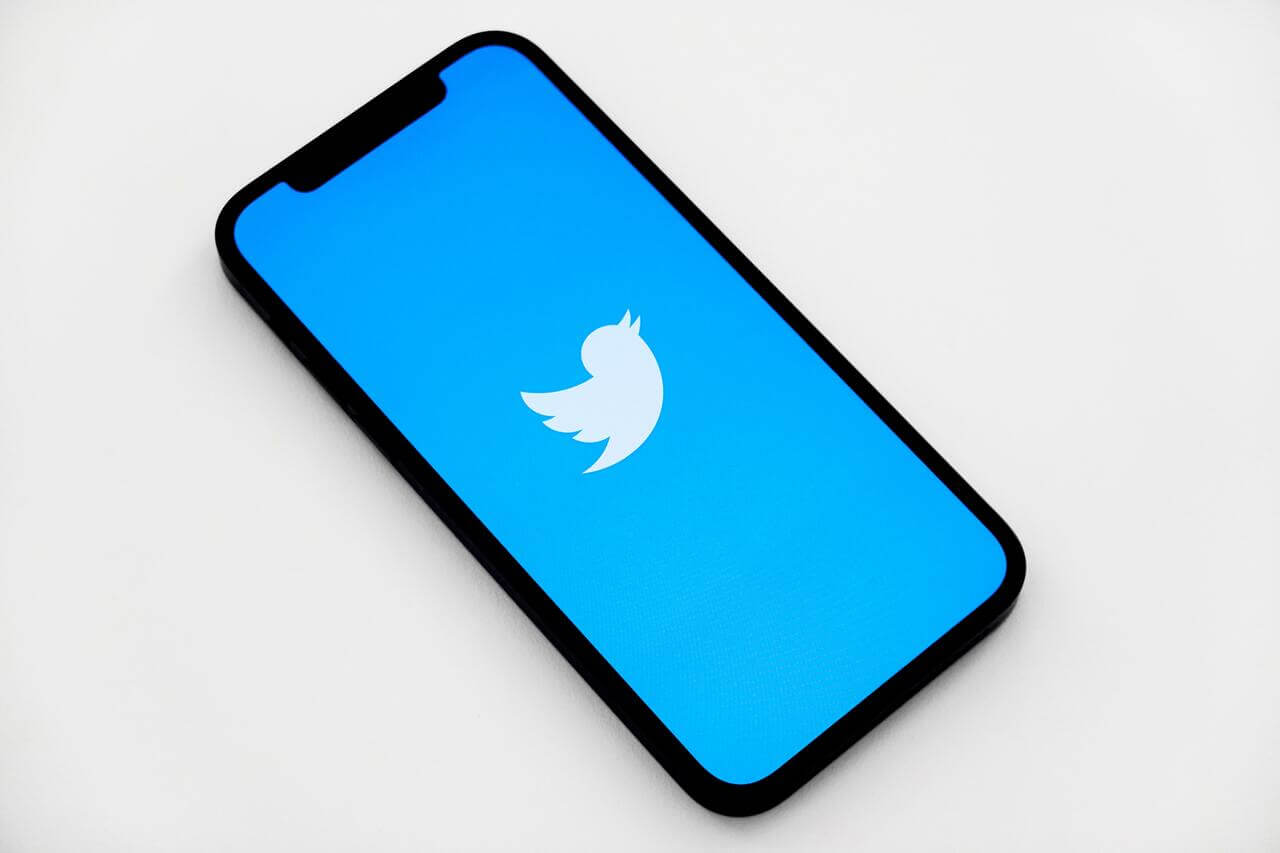Uber has had its equal share of successes and losses. When Uber came onto the scene in 2009, it revolutionized the modern ride-hailing industry. In fact, Uber was such an innovative idea that it completely altered the way consumers and businesses operated in the taxi industry.
As of 2020, Uber recorded annual revenue of over $11 billion with a market capitalization of 74 billion. These are awe-inspiring numbers. However, the journey for the company has not been without controversy, missteps, and disappointments.
Over the last decade, there have been several challenges that Uber had faced, most notably when the CEO and founder stepped down in 2017 and when it went public in 2019. Uber had the biggest first-day dollar loss in IPO history, making it one of the most anti-climatic listings in the world of start-ups.
Uber’s business model has caused significant issues for the ride-hailing giant. Claims of toxic work environments, labor issues, and lawsuits have plagued the company, leading to undesirable results.
Their cutthroat and sometimes questionable business practices have raised eyebrows and led to a terrible public image that they are still trying to clean up. But, their way of doing business has also been their most significant asset in turning an online app into a money-making machine.
Let’s delve into the history of Uber to see how this innovative tech company turned an app into one of the most profitable businesses in the 21st century. We will also look at how they sometimes lost the plot.
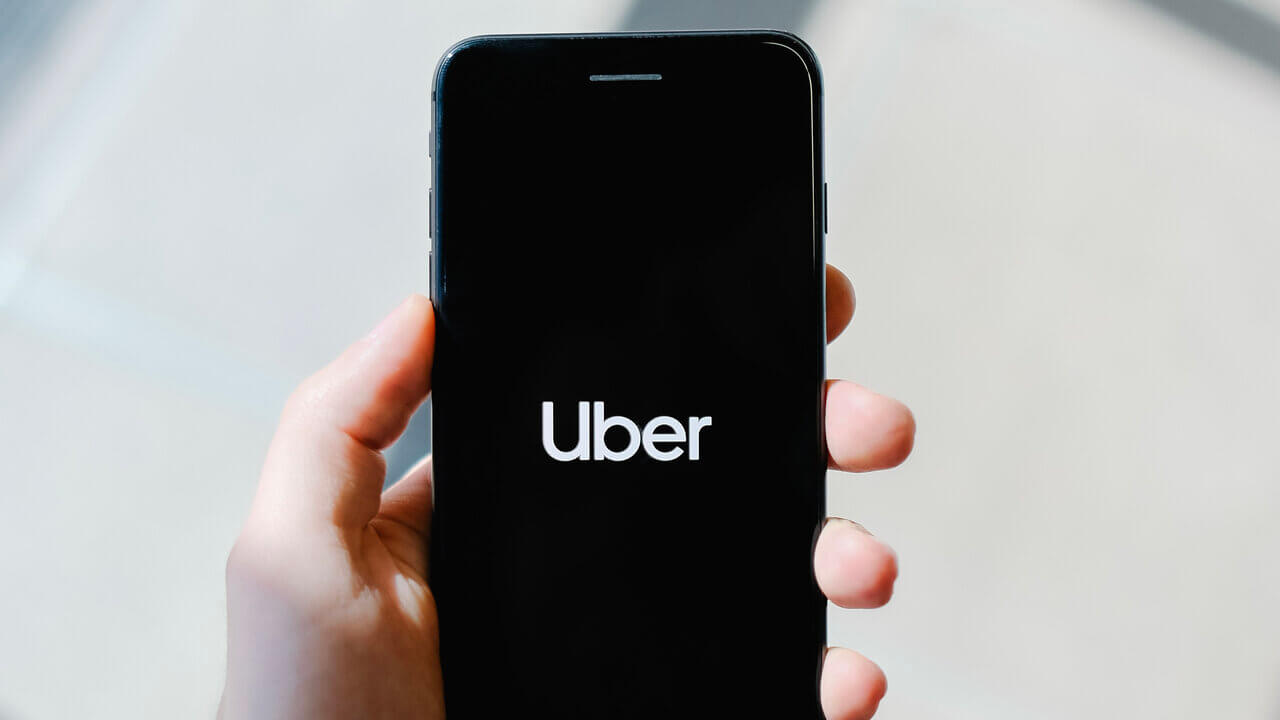
2007-2009: The birth of Uber
2007: The Conception
Travis Kalanick and Garrett Camp were successful start-up owners. Kalanick sold Red Swoosh to Akamai Technologies for $19 million, and Camp sold StumbleUpon to eBay for $75 million in 2007.
After racking in the millions, Camp began experiencing a new level of frustration with the taxi industry in San Francisco. Because of his hectic lifestyle, he was always on the go and so had constant friction with the state of the modern transportation industry, especially taxis.
The taxis weren’t reliable and the ride was unpleasant. Sometimes they even wouldn’t pick you up.
He tried to find solutions such as; calling several taxis out simultaneously, keeping the business cards of gypsy cabs, and renting cars for the night. Nothing was giving him the efficiency and independence he wanted to have without owning a car.
2008-2009: The Inception
In December 2008, during one snowy night in Paris, Travis Kalanick and Garrett Camp attended the LeWeb annual tech conference. The two gentlemen failed to get a cab, and that’s how the idea of Uber (launched as UberCab) was born.
When the two men left the conference, Camp returned to San Francisco and bought the domain name UberCab.com. Though he was still working as CEO of StumbleUpon, he began developing an UberCab prototype.
Within six months, the idea had morphed into something concrete. The early prototype relied on SMS dispatch. By June 2009, he had convinced Kalanick to join him as UberCab Chief Incubator. Kalanick argued that to minimize risk, they should make the app available to drivers who own cars instead of purchasing vehicles themselves.
Initially, the idea was to offer a limousine service that could be ordered using an app. The pair aimed to appeal to the upscale customer, who would be willing to pay extra for the convenience of a black car. Interestingly, Camp drew inspiration for the idea from a James Bond movie where the actor tracks a vehicle coming to his location using a phone.
He called it Uber because its meaning translates to “above all the rest” in German. The name has since proved to be prophetic.
2010: UberCab launch
A few key things happened in the year 2010 that contributed to the growth of Uber.
On the 5th of January, Kalanick sent out a now-famous tweet where he posts Uber’s first job opening. Ryan Graves responds. Kalanick’s use of social media would become one of Uber’s core channels for selling their product, communication, and customer engagement.
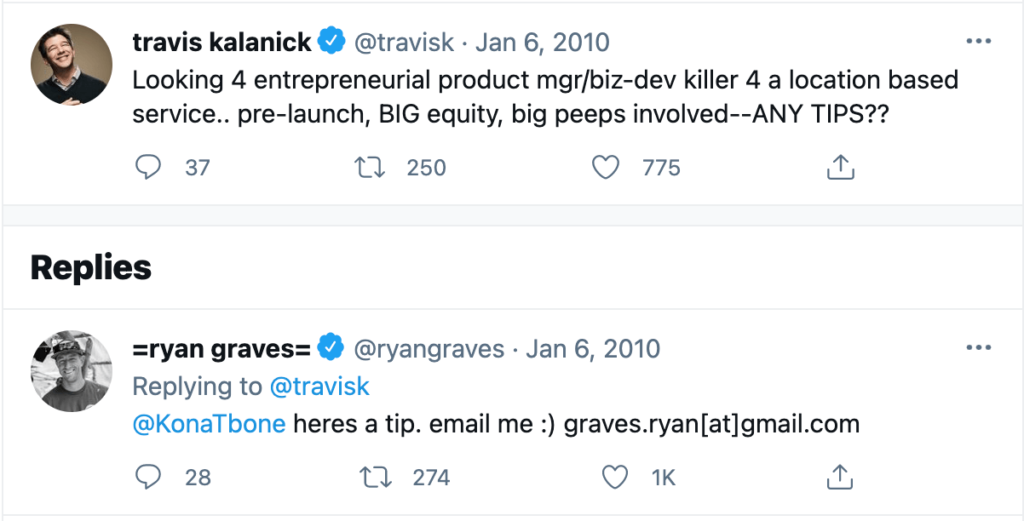
That tweet turned out to be a billion-dollar tweet. Ryan Graves became the first employee when Uber hired him as the first CEO a few months later. He was a key resource during the early stages of Uber’s development.
Uber launched a beta service in New York in the early months of 2010. They tested the efficiency of their service using three cars before they officially launched in San Francisco in June. The launch was successful, despite it being 1.5 times more expensive than the standard taxi fee.
Uber’s Early Value Proposition: What made it so appealing
How did Uber manage this? It found a solution to a real-world problem. San Francisco had a major taxi problem, but it was not unique. All big cities have large populations and a public and private transportation system that can’t cope with the demand. It is what made Uber appealing. Uber connected immediately with the city’s urban professionals that were hungry for a solution to their lack of car ownership and unreliable public transport.
From the onset, Uber realized that there was an untapped market in the industry. There was an overlooked customer segment they zoned in on. They aimed to appeal to wealthy urban professionals who led busy lives and had no time to hail a cab. Moreover, they were offering a hybrid taxi-chauffeur service that guaranteed a pickup. It gave them a significant competitive advantage over the taxi industry, where it was pretty common to order or hail a cab that never arrived.
Aside from the lack of supply, the cab experience was a nightmare. Often customers would have to brave all manner of elements just to get around the city. And, if they did manage to hail a cab, the ride was anything but pleasant.
There was no requirement for the taxi driver to be pleasant. Fumbling with cash and change issues once you reached your destination was a common occurrence. Uber resolved all these issues by making the ride enjoyable and the whole experience seamless.
They removed the need to use cash by offering card paying options. They hired professional black car drivers who were required to treat the customers well, and you could order a car in the comfort of your own home. Uber’s offer was too good to pass up, and their initial customer base was willing to pay extra for the service.
They were offering something that the taxi industry could not provide:
- a custom ride (pick up and drop off exactly where the customer wanted to go.)
- increased mobility (no transit or unscheduled stops.)
- shorter waiting time (customers could monitor the driver on the screen to estimate arrival time.)
- high level of service (driver rating system that increased accountability and helped with quality control.)
- safety (driver information available and real-time GPS tracking)
No one could beat that. Eventually, Uber evolved and started offering the service to a broader audience. They still kept their high-end service but ventured into ride-sharing and lower prices by introducing UberX in 2012.
Uber Drivers: Early Key Partners
Uber had to solve the chicken and the egg problem. Neither can exist without the other, but which comes first? For Uber, both the drivers and the riders were key partners. But for the business to be successful, they had to figure out who to concentrate on first.
At this stage of the business, there was a low entry threshold for drivers. Uber utilized the existing supply of professional black car drivers. They partnered with limousine companies and other black car driving establishments to act as an intermediary between the riders and the drivers. The drivers were not full-time employees. Uber considered them independent contractors.
For the drivers who are Uber’s key partners, the ability to set your own working hours, work independently without a boss and track your earnings was the appeal. While this business model worked in the beginning, it would cause problems for Uber later. Drivers would eventually fight to be considered as employees instead of independent contractors.
2010: Challenges
Lack of investor confidence
Investors felt that Uber’s business model would not work for one reason. It was a two-sided marketplace that depended on its two key partners; drivers and riders. If the drivers refused to take up the opportunity, then the riders would not use the service. If riders did not find it, then drivers would have to wait long for riders.
When the app went live in iOS in June 2010, it got rejected by most investors, including some on the AngelList. Despite this, Uber raised $1.25 million and secured a valuation of $5.3 million.
War with the taxi industry
There is always someone waiting to rain on your parade. Uber discovered this unpleasant truth quite early on. It seems they hadn’t expected just how disruptive their service would be to the taxi industry.
Uber faced some resistance. There were calls to shut down the company for a myriad of reasons. The San Francisco’s Metro Transit Authority sent a cease and desist letter in October 2010 to Uber, claiming that it was running a taxi service without licensing. They also objected to using the “cab” phrase, claiming that it was misleading to the customers.
The company changed its name to curb the backlash, dropping “cab” and keeping “Uber.” However, that is how far Uber was willing to go to appease the city authorities. The company refused to bow down to the rest of its demands. Eventually, the government officials agreed to accept Uber’s claim that it was not a cab, but instead, it was an intermediary between drivers and riders.
We will see this problem rear its head time and time again as Uber expands into other markets. There were several instances where the legislatures introduced new laws to stall the growth potential of the company. Uber always bounced back from these attempts, so in a way, the bad press helped to put Uber on the raider.
2011: Expansion, Heavy Resistance & Surge Pricing
2011 was a big year for Uber. After a successful run in San Francisco, Uber expanded into Seattle and New York. New York was another metropolitan city with a notoriously terrible taxi service and a bustling downtown area. There was heavy resistance from the city’s well-established taxi industry.
Kalanick didn’t care and continued to operate despite the resistance, although he eventually conceded in October and registered the service in New York. It is at this expansion stage that we see the problems in Kalanick’s approach. He was determined to succeed, regardless of who or what stood in his way.
He forgot that the city officials were key partners he needed to work with well. This “bulldozer” approach was the double-edged sword that eventually led to Uber becoming a hotbed of controversy-which we will discuss later on.
Roping in more investors
Towards the end of September, Uber recorded $9 million in revenue from fares. They get $1.8 million of that as commission. At this point, 9000 customers were using the app, most of them in San Francisco.
Uber realizes it needs more money to keep expanding. Kalanick eventually settles for Shervin Pishevar, who injects $25 million into the company. Pishevar was well connected and brought in celebrity investors like Britney Spears, Jay Z, and Ashton Kutcher.
Uber’s Early Channels
For the expansion to work as well as it did, Uber employed a variety of strategies. The first was how and where they recruited the drivers. They used online platforms such as Yelp and social media. They were also good at using word-of-mouth by going out and speaking to people at the airport to recruit drivers.
In New York, they failed to find drivers to meet demand, so they broke up the city into areas and sent drivers there. The purpose of this exercise was to flood the areas that had the highest need manually. It took care of the supply issue and safeguarded Uber against negative reviews. Their goal was to always ensure a great user experience.
By this time, Uber was receiving 3.5 ride requests per user every month. The data also showed that each user was introducing the service to at least 7 friends. We will see Uber using these channels quite often throughout their journey.
Surge Pricing
Part of Uber’s business model was to increase the ride price when demand exceeded availability. According to Uber,
Surge pricing automatically goes into effect when there are more riders in a given area than available drivers. This encourages more drivers to serve the busy area over time and shifts rider demand, to maintain reliability and restore balance.
They launched the automated surge pricing algorithm at the end of 2011 in New York. Prices increased 7 times the standard rate in New York and San Francisco. The backlash was instant, but it would not be the last that we see of it. Surge pricing continues to be one of Uber’s greatest controversies to this day.
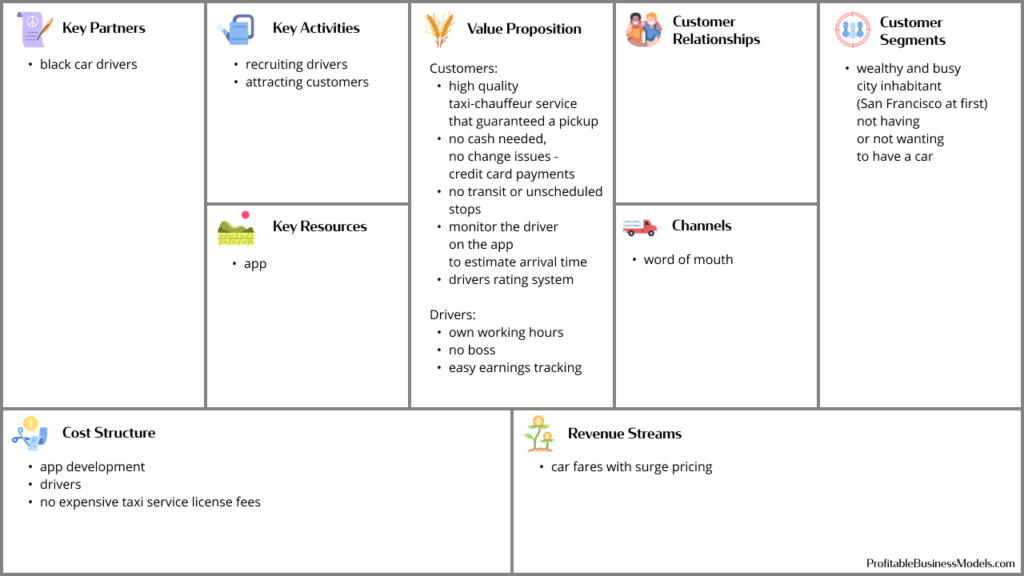
2012: Legal Trouble, Industry Rivalry, UberX & UberSUV
By now, Uber is operating in several cities and has over 50 employees, including drivers. Uber is once again declared illegal by the city of Washington DC. The officials make a show of it by ordering an Uber then proceeding to fine and impound the car during a press conference. This does not go well with Kalanick.
Despite this attack, the service continues to expand in the city, growing by 30-40% every month. In Boston, General Manager Michal Pao reveals that surge pricing motivated drivers to stay online longer when demand is high. This reduced unfulfilled requests by 60%. This data pushed Kalanick to make surge pricing a permanent and universal method.
Hailo
Hailo arrived on the scene from across the pond. This British company was founded in 2011 and matched taxi drivers and passengers through its app. Hailo raised $17 million and announced its plan to launch the service in New York, Boston, and Chicago. The competition had arrived for Uber.
Unlike Uber, Hailo aimed to create a community with the existing iconic yellow cab drivers and address the issues that plagued the taxi industry. Their aim was to introduce an app that would link taxi drivers and riders. The app would function more or less like the Uber app. It spelled trouble for Uber because it would lose its competitive advantage over the 13,000 plus yellow taxi cabs in the city.
If the taxis managed to get online and offer the seamless service that Uber provided at a lower price, then Uber was doomed.
Up to this point, Uber had been operating as an upscale service provider. But the arrival of Hailo spun the company into action. Despite some misgivings about diluting the brand by introducing taxis, Uber went ahead and launched UberTaxi 5 months before Hailo’s planned launch. Uber Taxi was meant to compete directly with Hailo by connecting yellow cab drivers with riders.
UberX & Uber SUV
Hailo’s arrival also prompted Uber to release an economy version of the service called UberX. Riders could request a ride at a lower price than taxis. UberX drivers would typically use sedans. They also expanded their service by introducing Uber SUV, which offered high-end luxury SUV rides for more than four passengers.
This innovative move gave Uber an early mover advantage over Hailo.
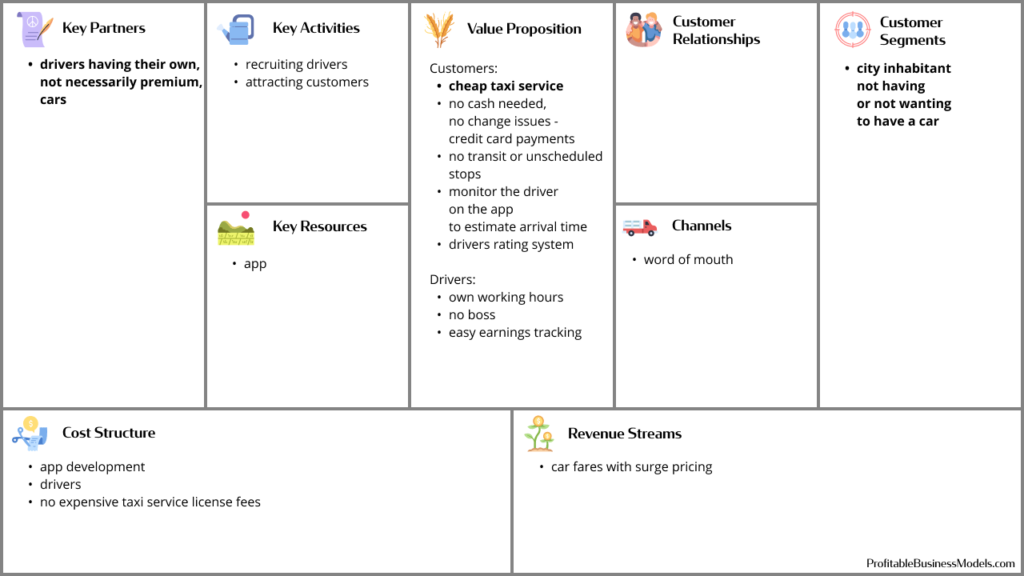
Legal Trouble
While UberX & UberSUV solved one problem, they created another. Uber could no longer claim they were intermediaries between the drivers and the riders. By employing drivers with taxi licenses, they were fully operating as a taxi service.
This gave them an unfair advantage over the regular taxis because they were not paying the expensive license fees and were constantly bypassing the city laws. The city of Washington DC proposed a compromise with the ride-hailing company. They would allow Uber to operate but would add a floor price that would increase Uber’s fare.
Uber rejected this, claiming it would give Hailo an advantage over them. Their solution? Start an online assault using loyal Uber customers. This is one of the many times that Kalanick’s ideas raise eyebrows across the board. Nevertheless, the strategy worked.
They successfully mobilized their customer base using social media. Accusing the city officials of price-fixing and corruption. Kalanick published the personal details of the council members, who were then bombarded by thousands of emails and tweets. Within a day, the council members had reversed their decision.
2013-2017: Market Dominance and Bad Business Practices, the thread unravels
The year 2013 is very significant in the history of Uber. On the one hand, Uber had just launched one of its major successes; the UberX service. The holes in the plot began to appear.
The year 2013 began with Uber raising $3.5 billion in funding. This capital injection allowed them to expand globally and establish themselves in international markets. The UberX service was a resounding success and gained popularity because its fares were 25% less expensive than regular taxis.
In California, the state issued an agreement with ride-hailing companies Lyft and Sidecar that required them to pass specific safety requirements. The agreement put an obligation on the companies to have driver’s insurance and to do background checks. Uber signed the same deal for UberX, which then became a ride-sharing service.
Class Action: Drivers versus Uber
One of Uber’s major legal issues began on the 16th of August, 2013. The business model of hiring people that owned cars was flawed in several ways. This approach exposed Uber to several risks and loopholes that criminals could use.
The case of O’Connor v. Uber Technologies, filed in the United States District Court for the Northern District of California, cut right into the core of Uber’s business model. Uber did not classify all drivers that were hired as employees. Instead, they were independent contractors. The lawsuit claimed that this designation was wrong and left the drivers exposed. They wanted employee benefits and mileage, and tip reimbursement. The case dragged on for several years.
December 2013: Surge pricing & Uber’s first fatal accident
Surge pricing created an outrage in New York during a snowstorm. This problem continued to deal blows on Uber’s customer relationships.
The first death also occurred that same month when an Uber driver hit a family in San Francisco, killing a 6-year-old girl and injuring the brother and the mother. The family filed a lawsuit, but Uber claimed the driver had no ongoing trips and was waiting to book a ride. This meant that he was technically not working for Uber back then, and the driver was therefore not covered by Uber’s insurance.
This argument left a sour taste in people’s mouths and raised questions concerning how Uber and other ride-hailing companies should be held responsible. Pressure mounted on Uber to revamp its insurance policies. California passes a law that tries to clear the ambiguity.
2014: UberEats, Bad Business Practices & More Protests
It seems the ball dropped for Uber in 2014. The consequences of its back door tactics soon caught up with them. Despite launching UberEats, one of its most successful ideas to date, the year 2014 was not a good year for Uber.
In June 2014, taxi drivers in London, Paris, Madrid, and Berlin staged large protests against Uber. They complained that the company was benefiting from not paying license fees and bypassing local laws. This resulted in Uber losing its license to operate in London in 2016.
In August, Uber’s competitor, Lyft, reported that 177 Uber employees were sabotaging their company by ordering and canceling rides since October 2013. They found evidence linking Uber to these canceled rides. Uber denied and stated that the recruiters, though related to them, were independent parties.
Gett also discovered that Uber was doing the same thing. Uber issued an apology in January 2014 after documents leaked showing Uber’s involvement.
Greyball software scandal
People accused Uber of using Greyball to avoid certain people from ordering rides. The app created an alternate reality that showed fake drivers to these groups of people. The report showed that Uber used Greyball to avoid giving rides to law enforcement officers in areas where it knew it was operating illegally.
This was all Kalanick’s doing because he firmly believed in what he called “principled confrontation.” It was a blatant disregard of local laws and regulations. When faced with this challenge, he believed in using one of Uber’s main channels; social media. He would call for public support via Twitter to push the regulators to change the laws and accommodate Uber.
While this initially gave Uber massive traction, it eventually returned to bite Uber and Kalanick.
Data breaches & The “Dig up dirt dinner.”
In February 2015, Uber admitted that someone had hacked them, and the personal information of over 50,000 drivers had been taken. They discovered this leak five months before they notified the affected individuals.
Senior Vice President Emil Michael was heard stating that Uber should hire a team of journalists and investigators to “dig up dirt” on popular figures who criticized or reported negatively about Uber. When the story leaked, Michael apologized but only left the company in 2017 after Kalanick left.
2017: The Axe Comes Down
From 2011 Travis Kalanick had been the CEO after taking over from Ryan Graves. He led the company to great successes, but his personal beliefs and methods of conducting business were slowly chipping away at the company.
The disregard for state and city laws, the surge charging backlash, and the business model of treating drivers as independent contractors came back to bite Uber. Uber eventually admitted that it used Greyball to blacklist city and government officials from using the service in March 2017. This resulted in a criminal investigation being opened by the United States Department of Justice.
The driver’s issue was central to the growth and the stalling of Uber’s growth. While the model kept operating costs low for Uber, it created too many loopholes, and they lost control of one of their key partners; the drivers. Lack of proper background checks resulted in constant lawsuits for accidents, assault, rape, and murder.
The list of issues kept mounting up in 2017 for Uber. In January, the #DeleteUber hashtag gained traction after customers noticed Uber was planning on benefiting from the taxi strike protesting Donald Trump’s immigration ban in New York.
Accusations of a misogynistic corporate culture resulted in former US attorney Eric Holder being brought in to investigate Uber’s culture. It forced a senior executive to resign after failing to disclose a sexual allegation filed against him. A tape of Kalanick mistreating an Uber driver surfaced.
Eventually, Kalanick was forced to resign by investors in June 2017 after releasing the Eric Holder report.
2018-Now: Recovery
Uber was in big trouble. Though its value proposition was still very much intact, it was failing in so many vital areas. Its relationships with customers and key partners were hanging by a thread. In addition, it was failing dismally to improve one of its key value propositions; driver vetting and safety.
After Kalanick’s departure, the company went on a campaign to correct all these issues. Financially, it was still going strong. Acquiring a food delivery app (Postmates) in 2018 as well as investing in Lime (an electric scooter rental company) and pouring resources into Uber self-driving cars.
But the scandals and the bullish business practices that it engaged in from its inception smothered its success. This culminated in the biggest first-day dollar loss in IPO history in the United States when Uber went public in 2019. Uber’s valuation took a big hit.
As of 2020, the ride-hailing giant struggles to find its feet, especially after rides declined because of the coronavirus pandemic. However, the company stays afloat due to diversifying its business investments in industries such as food delivery and many more.
The Bottom Line
Uber started off well. Its business plan was concrete up to a certain point. They failed to notice or ignored the errors and loopholes in their business model. The arrogance towards the authorities and questionable business practices resulted in significant losses for them. Time will tell whether they will regroup and thrive once again.

